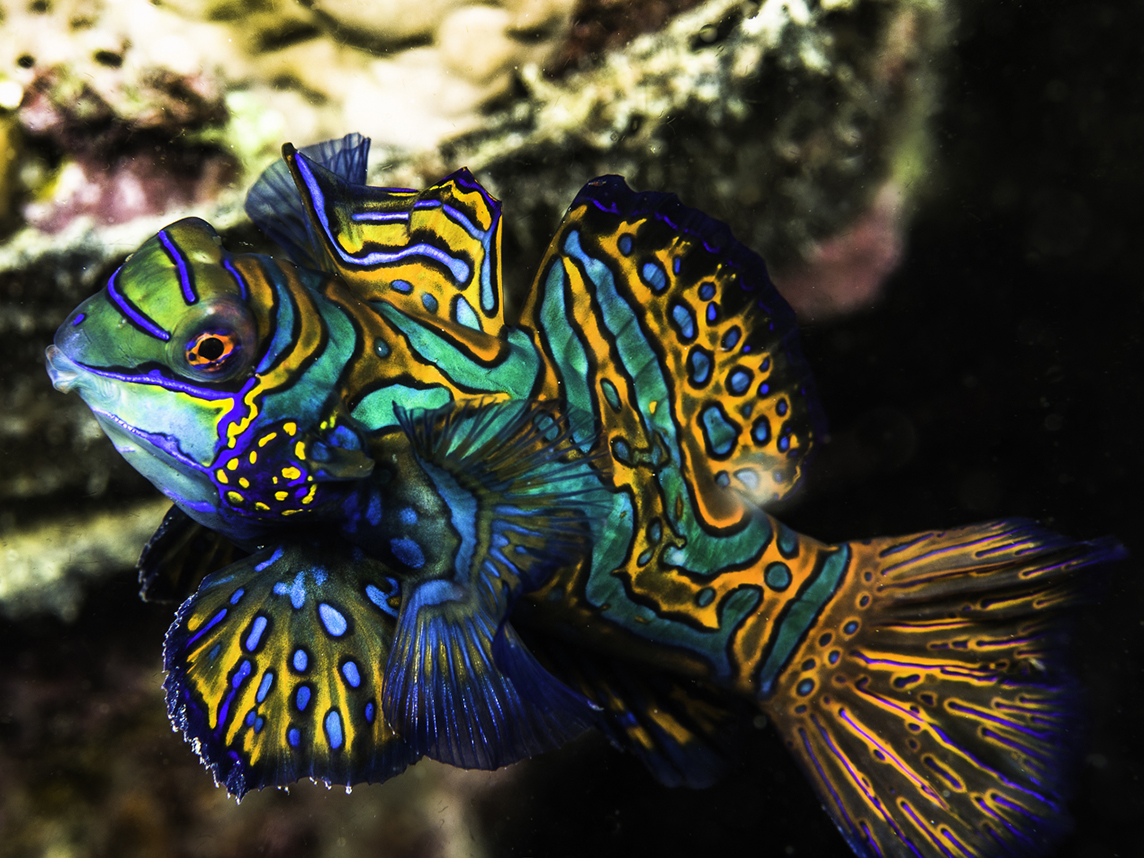
Synchiropus splendidus
FAMILY
Callionymidae
TAXONOMY
Synchiropus splendidus Herre, 1927, Bungau, Philippines.
OTHER COMMON NAMES
Japanese: Nishiki-teguri.
PHYSICAL CHARACTERISTICS
Total length about 3.1 in (8 cm). Sexually dimorphic; males
larger than females and have larger dorsal fins. Small, somewhat
elongated body lacks scales but has well-developed lateral
line. Two dorsal fins, first with 4 spines and second with 8
dorsal rays. There are 6–8 soft rays on the anal fin. The preopercle
has strong spine, but no spines present on operculum or
suboperculum. Body coloration of vivid green or blue markings
on ground color of orange, or rarely red.
DISTRIBUTION
Western Pacific and eastern Indian Ocean from the Philippines
and Indonesia (Java), east to Pohnpei (Micronesia) and
New Caledonia, south to northwestern Australia (Rowley
Shoals) and to the southern Great Barrier Reef, and north to
the Ryukyu Islands of southern Japan. May also occur in
Tonga.
HABITAT
Coral reefs on inshore reefs and in protected lagoons. Micro
HABITAT
mainly coral heads, silty rubble, and even leaf litter.
Ranges in depth 3.3–59 ft (1–18 m).
BEHAVIOR
Generally solitary and cryptic within a home range. Emerges to
feed during early morning, just before dusk, or in cloudy weather.
Social interactions are relatively few and usually not aggressive.
FEEDING ECOLOGY AND DIET
Feeds upon small benthic invertebrates.
REPRODUCTIVE BIOLOGY
Gonochoristic and polygynous, with a single male mating with
more than one female daily. Courtship and spawning occurs
during short period at dusk throughout most of the year. Females
move to one or more specific areas before the onset of
courtship. Males also move to and between these areas seeking
females to court. Larger males dominate smaller males and
prevent them from courting with females. Males use elaborate
fin displays and circle females repeatedly during courtship.
More than one bout of courtship may be necessary before a female
is ready to spawn. Then, the pair rises slowly into the water
column to spawn and fertilize a small batch (12–205) of
pelagic eggs. After spawning, female returns to her home area
to sleep, and male moves on to attempt to court and spawn
with other females. Reported to have been bred in captivity.
Larvae are pelagic.
CONSERVATION STATUS
Not listed by the IUCN. May be vulnerable or threatened by
overfishing, destructive fishing (including the use of cyanide),
and destruction of
HABITAT
.
SIGNIFICANCE TO HUMANS
Important and highly prized aquarium fish harvested mainly in
Southeast Asia and imported to the United States as part of the
aquarium trade.
Photo Gallery of - Mandarinfish





 Animalia Life
Animalia Life